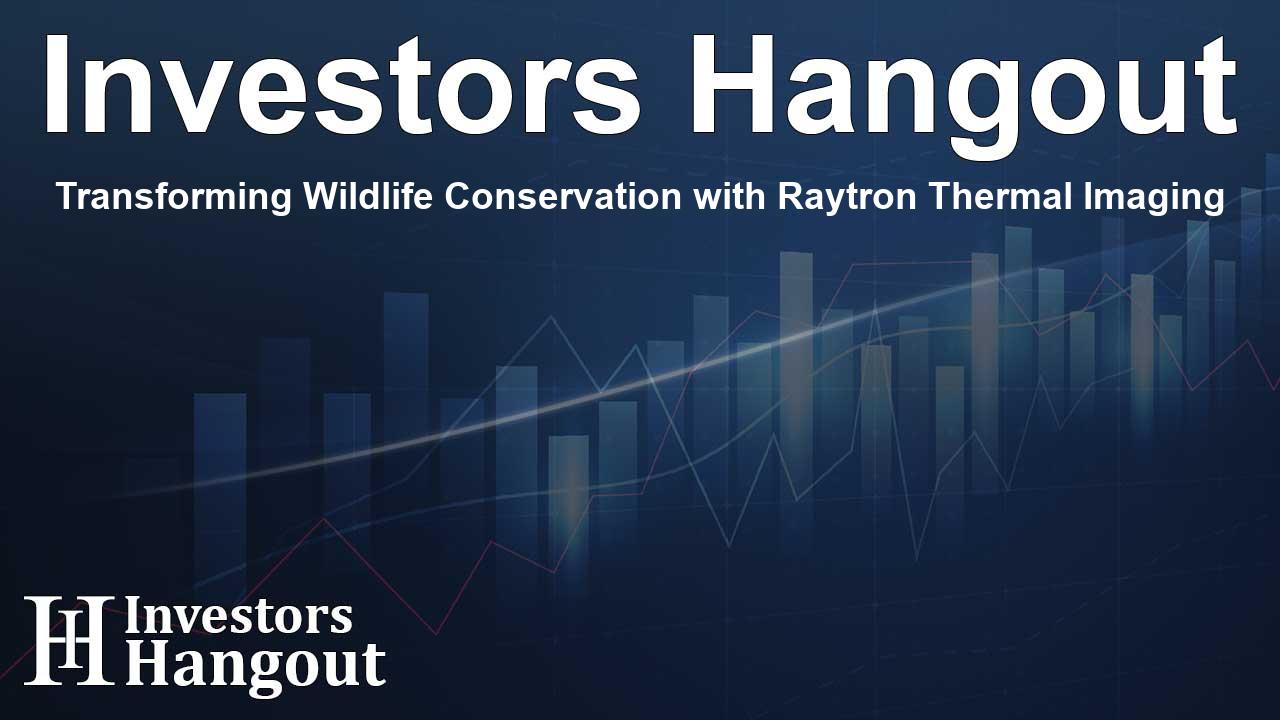Transforming Wildlife Conservation with Raytron Thermal Imaging

Transforming Wildlife Conservation with Raytron Thermal Imaging
In recent years, the challenges facing wildlife have increased significantly due to various environmental pressures such as habitat loss, climate change, and increasing instances of illegal poaching. These factors highlight the urgent need for innovative solutions to ensure the protection of wildlife and promote biodiversity. Raytron Thermal Imaging has emerged as a key player in this field, providing advanced thermal camera systems that aid in monitoring, protecting, and promoting the coexistence of humans and wildlife.
24/7 Monitoring: How Thermal Imaging Enables Nighttime Safety
Traditional wildlife monitoring methods often fall short when it comes to nighttime detection. However, with Raytron's thermal cameras, conservationists can detect heat signatures effectively, ensuring non-invasive monitoring any time of day or night. For example, in a notable case in the Maasai Mara Reserve, advanced thermal imaging technology has helped conservation groups monitor animal activities after hours, significantly reducing the threat posed by poachers. By detecting illegal hunting activities in real-time, teams have successfully intervened, leading to a decline in poaching incidents and enhancing the safety of endangered species.
Reviving Endangered Populations
Thermal imaging technology has proven pivotal in recovering local wildlife populations. The endangered Florida panther, for instance, has shown a remarkable recovery, increasing from under 100 to over 200 individuals. This growth is attributed to the crucial data gathered via thermal cameras that track these panthers' nocturnal movements. Such advances showcase how technology can significantly contribute to the survival of species on the brink of extinction.
Combating Poaching with Cutting-Edge Technology
Raytron's commitment to wildlife conservation extends beyond mere product manufacturing. The company has implemented state-of-the-art thermal imaging systems to protect entire wildlife populations. In a recent initiative involving a herd of Asian elephants in Yunnan Province, Raytron deployed extensive thermal camera networks to monitor these elephants over vast distances, ensuring their safety as they navigated towards urban areas. This proactive approach demonstrates how Raytron is making strides in preventing human-animal conflicts while promoting safety for both parties involved.
Managing Human-Wildlife Interactions
The increasing encounters between wildlife and humans necessitate timely intervention strategies. In regions where wild boars threaten farmland, Raytron's infrared cameras have facilitated immediate reaction to these situations, preventing potential conflicts before they escalate. These innovative solutions showcase Raytron's ability to adapt technology for sustainability, emphasizing the company's role as a leader in wildlife monitoring.
Raytron's Vision for Sustainable Wildlife Protection
Raytron's commitment to wildlife conservation remains steadfast, focusing on the continuous development of eco-friendly surveillance technology. The company is dedicated to fostering biodiversity and maintaining ecological balance through innovative thermal imaging solutions. By integrating artificial intelligence with advanced sensing technology, Raytron aims to enhance the effectiveness of wildlife protection measures further.
As the world grapples with environmental challenges, the need for robust conservation strategies has never been greater. Companies like Raytron highlight the effectiveness of technology in addressing these urgent issues, paving the way for safer coexistence between humans and wildlife. Their ongoing mission is to provide comprehensive and customized thermal imaging solutions that cater to the unique needs of wildlife protection.
Frequently Asked Questions
What are the benefits of thermal imaging in wildlife conservation?
Thermal imaging offers non-invasive monitoring capabilities, allowing for consistent surveillance and protection of wildlife at all hours, helping to reduce poaching incidents.
How has Raytron contributed to the protection of endangered species?
Raytron's thermal cameras have been instrumental in tracking and protecting endangered species, such as the Florida panther and Asian elephants, through advanced monitoring and intervention strategies.
Can thermal cameras prevent human-wildlife conflicts?
Yes, thermal cameras enable proactive management of wildlife interactions with humans, allowing authorities to mitigate potential conflicts before they escalate.
What is Raytron's approach to sustainability?
Raytron is dedicated to eco-friendly practices, continuously innovating their thermal imaging technology to support wildlife conservation and promote ecological balance.
How can organizations partner with Raytron for wildlife protection?
Organizations interested in using Raytron's thermal imaging solutions for wildlife protection can contact the Raytron Marketing Department for customized options.
About The Author
Contact Riley Hayes privately here. Or send an email with ATTN: Riley Hayes as the subject to contact@investorshangout.com.
About Investors Hangout
Investors Hangout is a leading online stock forum for financial discussion and learning, offering a wide range of free tools and resources. It draws in traders of all levels, who exchange market knowledge, investigate trading tactics, and keep an eye on industry developments in real time. Featuring financial articles, stock message boards, quotes, charts, company profiles, and live news updates. Through cooperative learning and a wealth of informational resources, it helps users from novices creating their first portfolios to experts honing their techniques. Join Investors Hangout today: https://investorshangout.com/
The content of this article is based on factual, publicly available information and does not represent legal, financial, or investment advice. Investors Hangout does not offer financial advice, and the author is not a licensed financial advisor. Consult a qualified advisor before making any financial or investment decisions based on this article. This article should not be considered advice to purchase, sell, or hold any securities or other investments. If any of the material provided here is inaccurate, please contact us for corrections.
